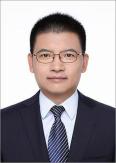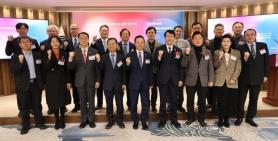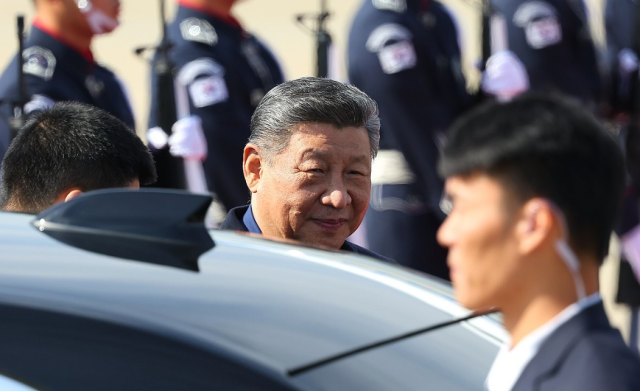
SEOUL, October 30 (AJP) - What should have been a venue for championing free trade and regional cooperation on shared challenges — from AI governance to climate change — instead turned into a geopolitical showcase between the world's two superpowers.
Gyeongju, the ancient Silla capital hosting South Korea's first APEC summit in 20 years, became the stage for a U.S.–China hegemony face-off as President Xi Jinping arrived just as U.S. President Donald Trump wrapped up his appearances.
Xi landed in Busan on Thursday for a three-day state visit, his first trip to South Korea in 11 years. Bilateral ties have never fully recovered from the fallout of Seoul's deployment of the U.S. THAAD missile-defense system in 2016. Meanwhile, Pyongyang–Beijing relations are at their strongest in decades — underscored by Xi escorting North Korean leader Kim Jong-un and Russian President Vladimir Putin during last month's "Victory Day" celebrations.
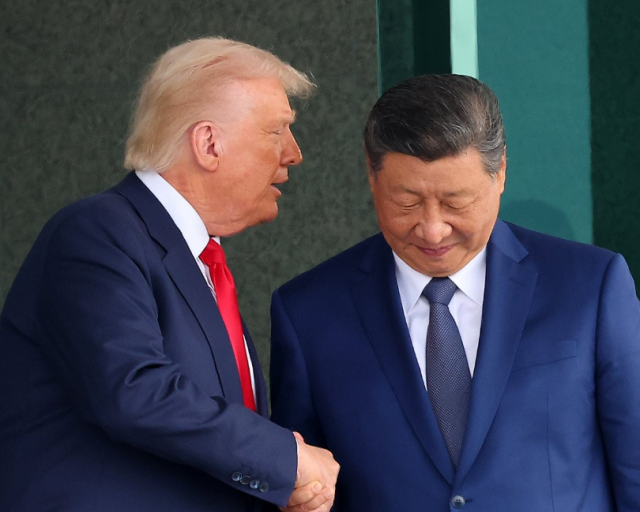
Rather than heading straight to Gyeongju, Xi first held a closed-door meeting with Trump at a Busan air base amid widening trade friction spanning 100% tariffs, port fees, critical minerals, and soybeans. The 90-minute encounter, one of the most anticipated moments of this year's APEC week, produced little more than cordial optics — handshakes, pleasantries, and a mutual pledge to keep talking.
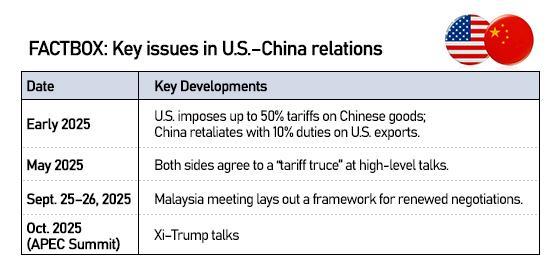
"Zero to ten, with ten being the best — I'd say the meeting was twelve," Trump told reporters aboard Air Force One following what was likely his last engagement with Xi during the summit. "A lot of decisions were made... and we've concluded very many important points," he said without elaborating. Neither Washington nor Beijing provided details.
With Trump's departure, APEC leaders moved quickly back to their formal agenda. Xi, for his part, is holding separate summits with his new counterparts in East Asia — Japanese Prime Minister Sanae Takaichi and South Korean President Lee Jae-myung.
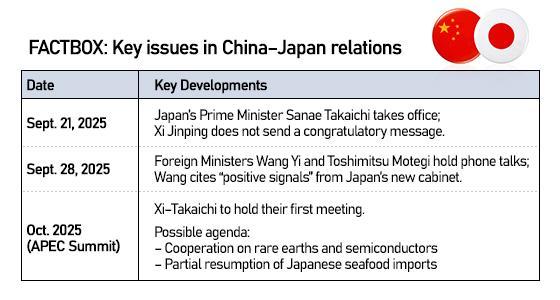
Xi meets Takaichi on Friday in their first summit since she took office earlier this month. Their chemistry remains uncertain, given the new prime minister's staunch nationalistic stance. Xi notably did not send a congratulatory message upon her inauguration, though Chinese Foreign Minister Wang Yi recently said Beijing "notes the positive signals" from the new cabinet, hinting at openness to dialogue.
Discussions are expected to cover a partial resumption of Japanese seafood imports — suspended after the release of treated water from the Fukushima nuclear plant — as well as cooperation on rare earths and semiconductor equipment. Analysts say both sides have an incentive to restore practical ties given their intertwined industrial ecosystems.
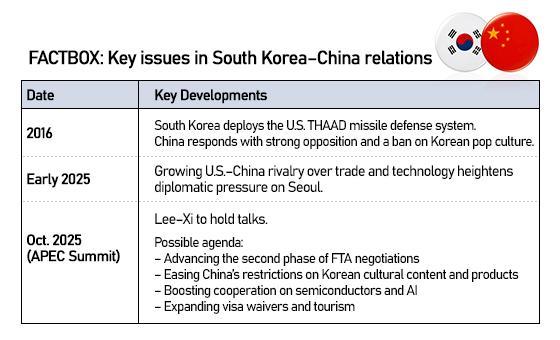
Xi is also meeting President Lee Jae-myung for the first time since Lee's snap-election victory in June. Lee, from the progressive Democratic Party, is traditionally seen as more open to Beijing.
Talks are expected to address lifting China's ban on Korean cultural content, advancing Phase 2 negotiations of the Korea–China Free Trade Agreement, and expanding cooperation in semiconductors, AI, tourism, and service-sector investment.
Phase 2 of the FTA would expand the current goods-focused agreement to cover services, digital trade, and high-tech industries. Seoul and Beijing are also likely to discuss extending visa waivers and enhancing joint responses to cybercrime and online fraud.
Sensitive security topics — North Korea's nuclear and missile programs, illegal Chinese maritime structures in the West Sea, and tensions in the Taiwan Strait — are expected to be handled cautiously.
Beijing may also raise concerns over deepening Seoul–Washington defense cooperation, particularly after Trump approved South Korea's plan to build nuclear-powered submarines.
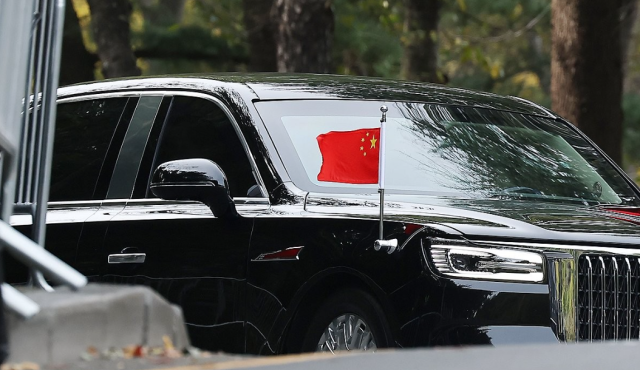
The outcomes of Xi's Gyeongju meetings are expected to help define Northeast Asia's diplomatic tone at a time when Seoul is navigating a delicate balance between Washington's strategic expectations and Beijing's growing regional ambitions.
Copyright ⓒ Aju Press All rights reserved.


